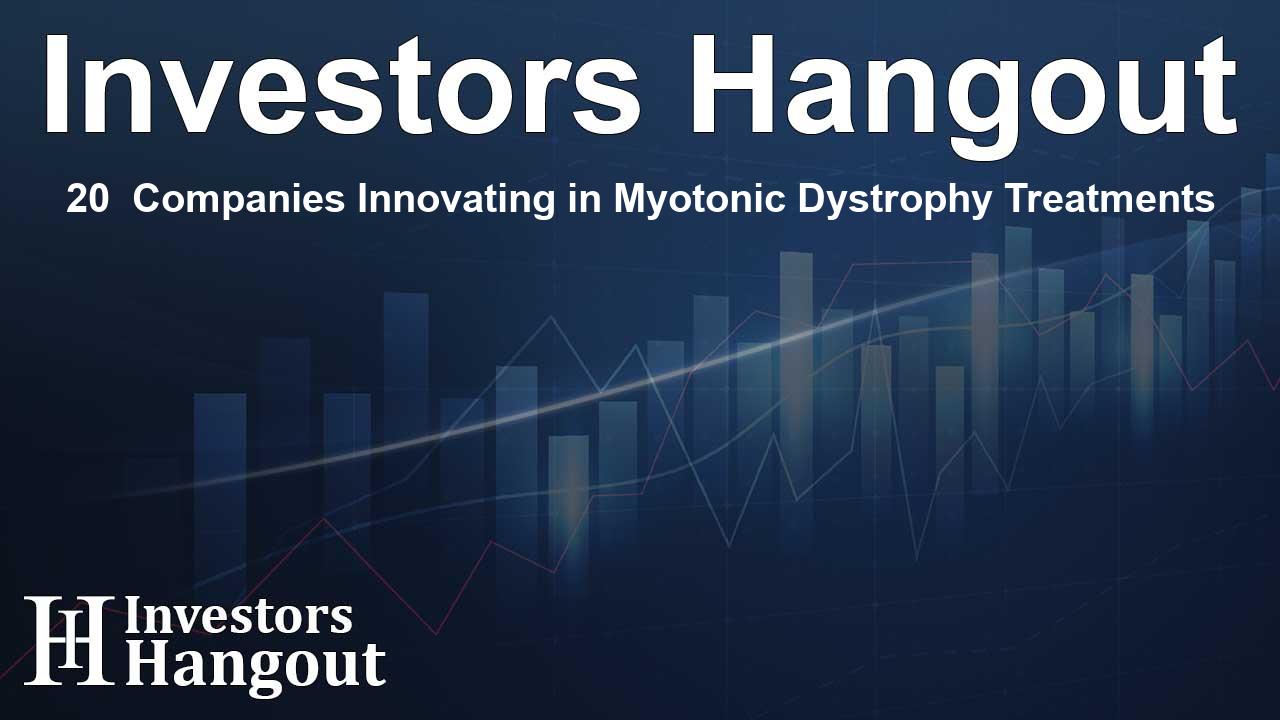20+ Companies Innovating in Myotonic Dystrophy Treatments

Innovative Surge in Myotonic Dystrophy Research
The recent surge in research and development (R&D) activities concerning myotonic dystrophy promises to transform the landscape of this complex disease. Increased focus on understanding myotonic dystrophy enhances drug discovery processes and facilitates the development of groundbreaking therapies. Emerging solutions, such as gene therapies, antisense oligonucleotides, and targeted small molecules, aim to meet the pressing needs in myotonic dystrophy care, fostering a competitive environment that stimulates progress and enhances patient outcomes.
Current Landscape of Myotonic Dystrophy Pipeline
A comprehensive report on myotonic dystrophy pipeline therapies reveals a robust array of clinical developments driven by more than 20 active companies working diligently to introduce over 22 distinct therapeutic options. Prominent players in this evolving field include Avidity Biosciences, AMO Pharma, Harmony Biosciences, Dyne Therapeutics, and Vertex Pharmaceuticals. These companies are committed to enhancing the treatment options available for patients suffering from this debilitating condition.
Breakthrough Developments in Clinical Trials
Several notable therapies are currently undergoing various phases of clinical trials, showcasing promising advancements. Key pipeline candidates include AOC 1001, Mexiletine, Tideglusib, and Pitolisant, each with its unique approach to treating myotonic dystrophy. For instance, AOC 1001 focuses on inhibiting myotonin protein kinase, exhibiting potential in reversing muscle weakness.
Recent Regulatory Approvals and Designations
In a recent milestone, ARTHEx Biotech garnered Rare Pediatric Designation from the US Food and Drug Administration for ATX-01, a promising treatment targeting myotonic dystrophy type 1, further emphasizing the urgency and importance of advancing therapies for this serious condition. Additionally, Dyne Therapeutics received clearance for the Investigational New Drug application for DYNE-101, which is currently being tested in a global Phase I/II ACHIEVE trial. These developments highlight the commitment to addressing the needs of patients with myotonic dystrophy.
Understanding Myotonic Dystrophy
Myotonic dystrophy is a genetic condition marked by progressive muscle wasting and weakness, stemming from mutations in specific genes that disrupt normal muscle function. The two primary forms, Myotonic Dystrophy Type 1 (DM1) and Type 2 (DM2), arise from expansions of repetitive DNA sequences, impacting patients' health significantly. Symptoms can vary widely and often include muscle stiffness (myotonia), weakness, and atrophy, predominantly affecting the distal muscles and facial region.
Impact on Daily Life and Management Strategies
The effects of myotonic dystrophy can extend beyond physical manifestations, affecting cognitive functions, cardiac rhythms, and endocrine systems. To manage these complex symptoms, treatment strategies often encompass physical therapy, medications to mitigate myotonia, and vigilant monitoring for cardiac issues. A holistic understanding and effective management plan are crucial for improving the quality of life for affected individuals.
Future Perspectives in Myotonic Dystrophy Treatment
As the myotonic dystrophy pipeline continues to expand, opportunities for innovative therapeutic interventions emerge. The collaborative efforts of numerous companies, along with advancements in research methodologies, herald a new era in treating myotonic dystrophy. By addressing unmet needs through research and clinical trials, these companies aim to transform the care landscape, offering hope to patients and families impacted by this challenging condition.
Frequently Asked Questions
What is myotonic dystrophy?
Myotonic dystrophy is a genetic disorder characterized by progressive muscle wasting and weakness, caused by mutations in specific genes affecting muscle function.
How many companies are involved in myotonic dystrophy research?
Over 20 companies are actively working on various therapeutic approaches and clinical trials to develop treatments for myotonic dystrophy.
What are some promising treatments in development?
Promising treatments include AOC 1001, Mexiletine, and Tideglusib, which target different aspects of the disease mechanism.
What recent regulatory approvals have been granted?
ARTHEx Biotech received Rare Pediatric Designation for ATX-01, and Dyne Therapeutics has secured FDA clearance for DYNE-101.
What strategies are employed to manage myotonic dystrophy?
Management strategies include physical therapy, medications for myotonia, and regular monitoring for cardiac health, providing comprehensive care for affected individuals.
About Investors Hangout
Investors Hangout is a leading online stock forum for financial discussion and learning, offering a wide range of free tools and resources. It draws in traders of all levels, who exchange market knowledge, investigate trading tactics, and keep an eye on industry developments in real time. Featuring financial articles, stock message boards, quotes, charts, company profiles, and live news updates. Through cooperative learning and a wealth of informational resources, it helps users from novices creating their first portfolios to experts honing their techniques. Join Investors Hangout today: https://investorshangout.com/
Disclaimer: The content of this article is solely for general informational purposes only; it does not represent legal, financial, or investment advice. Investors Hangout does not offer financial advice; the author is not a licensed financial advisor. Consult a qualified advisor before making any financial or investment decisions based on this article. The author's interpretation of publicly available data shapes the opinions presented here; as a result, they should not be taken as advice to purchase, sell, or hold any securities mentioned or any other investments. The author does not guarantee the accuracy, completeness, or timeliness of any material, providing it "as is." Information and market conditions may change; past performance is not indicative of future outcomes. If any of the material offered here is inaccurate, please contact us for corrections.